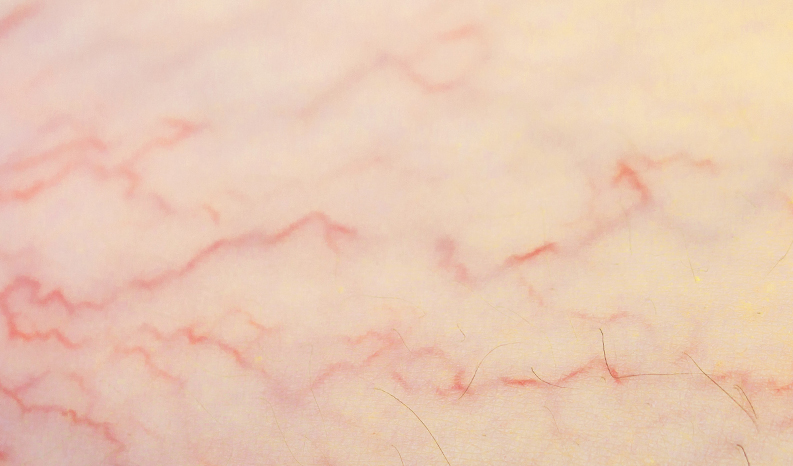
Leg Veins
Sclerotherapy is a medical procedure used to remove varicose and spider veins. It involves a solution injection and is injected directly into the vein. The solution cause the lining of the blood vessel to swell and stick together, and the blood to clot.
Varicose veins are enlarged veins that are either blue, red or flesh-coloured. They often look like twisted and bulging cords. They can be swollen and raised above the surface of the skin. Varicose veins are often found on the thighs, backs of the calves, or the inside of the leg. During pregnancy, varicose veins can form around the vagina and buttocks.
Spider veins are like varicose veins but smaller. They also are closer to the surface of the skin than varicose veins. Often, they are red or blue. They can look like tree branches or spiderwebs with their short, jagged lines. They can be found on the legs and face; they can also cover either a very small or very large area of skin.
Causes
Varicose veins can be caused by weak or damaged valves in the veins. The heart pumps blood filled with oxygen and nutrients to the whole body through the arteries. Veins then carry the blood from the body back to the heart. As your leg muscles squeeze, they push blood back to the heart from your lower body against the flow of gravity. Veins have valves that act as one-way flaps to prevent blood from flowing backwards as it moves up your legs. If the valves become weak, blood can leak back into the veins and collect there. When backed-up blood makes the veins bigger, they can become varicose.
Spider veins can be caused by the backup of blood. They can also be caused by hormone changes, exposure to the sun and injuries.
Increasing age
As you get older, the valves in your veins may weaken and not work as well.
Medical history
Being born with weak vein valves increases your risk. Having family members with vein problems also increases your risk. About half of all people who have varicose veins have a family member who has them too.
Hormonal changes
These occur during puberty, pregnancy and menopause. Taking birth control pills and other medicines containing estrogen and progesterone also may contribute to the forming of varicose or spider veins.
Pregnancy
During pregnancy, there is a huge increase in the amount of blood in the body. This can cause veins to enlarge. The growing uterus also puts pressure on the veins. Varicose veins usually improve within 3 months after delivery. More varicose veins and spider veins usually appear with each additional pregnancy.
Obesity
Being overweight or obese can put extra pressure on your veins. This can lead to varicose veins.
Lack of movement
Sitting or standing for a long time may force your veins to work harder to pump blood to your heart. This may be a bigger problem if you sit with your legs bent or crossed.
Sun exposure
This can cause spider veins on the cheeks or nose of a fair-skinned person.





